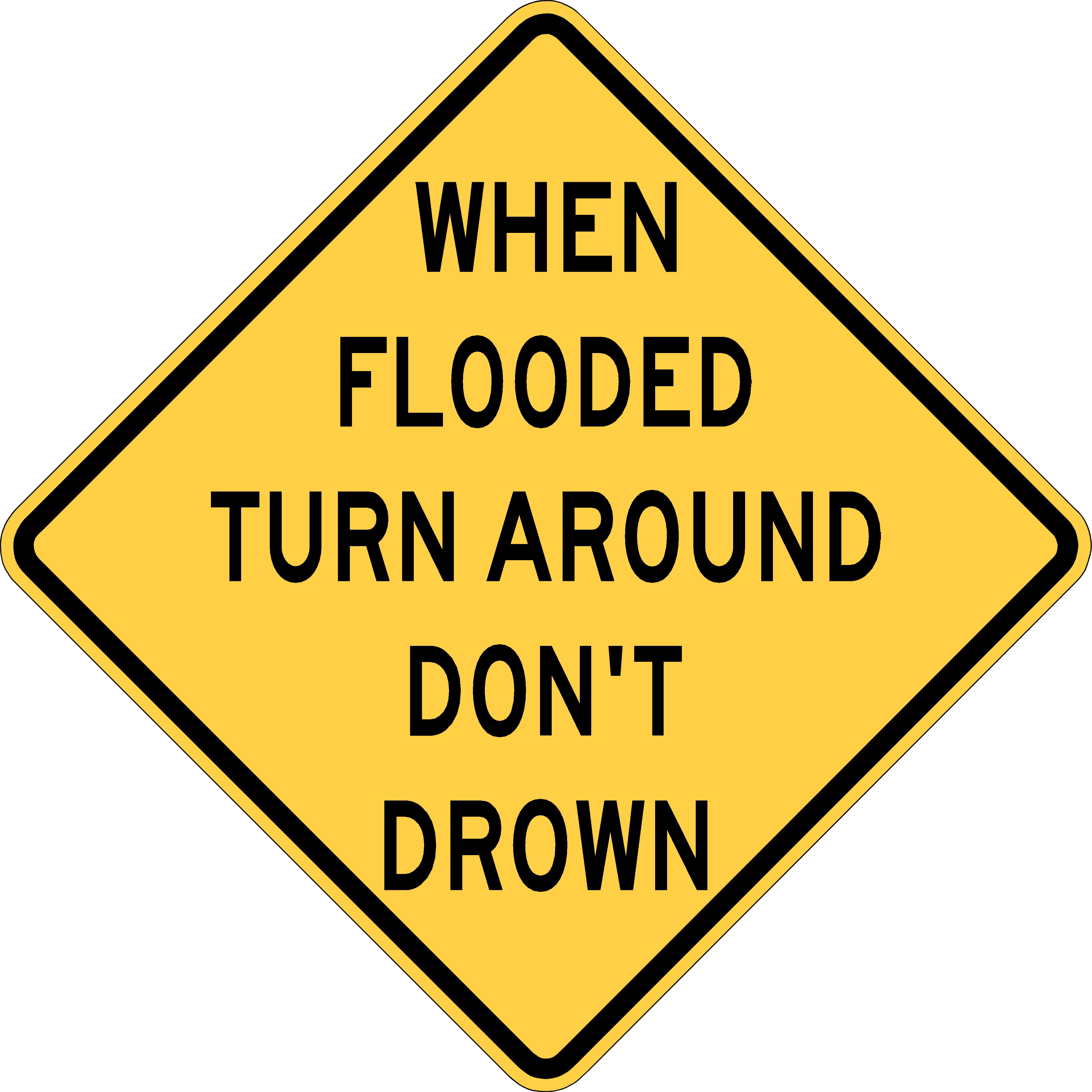Staying Safe During A Flood Warning: Expert Advice From The NWS

Table of Contents
Understanding Flood Warnings and Watches
Before a flood occurs, you might receive a flood watch or a flood warning. Understanding the difference is critical. A flood watch means conditions are favorable for flooding. This isn't a call to action, but a signal to monitor weather reports closely and be prepared. A flood warning, however, is much more serious. It indicates that flooding is either happening now or is imminent in your specific area. Immediate action is required.
- Flood Watch: Conditions are favorable for flooding. Stay informed and be prepared. Monitor local news and weather reports for updates. Prepare your emergency kit and review your evacuation plan.
- Flood Warning: Flooding is imminent or already occurring in your area. Take immediate action. This requires immediate response; follow evacuation orders and take steps to protect your life and property.
- Flash Flood Warning: This is the most urgent type of flood warning. A flash flood is a rapid, unexpected flood, often with little to no warning. If you receive a flash flood warning, evacuate immediately.
You can receive flood warnings through several channels:
- NOAA Weather Radio: A dedicated weather radio is an excellent source of real-time weather alerts, including flood warnings.
- Weather Apps: Many smartphone weather apps provide real-time alerts and push notifications for severe weather, including flood warnings.
- Local News: Television and radio news broadcasts provide important information and updates during severe weather events.
Evacuation Procedures During a Flood Warning
Following evacuation orders immediately is paramount during a flood warning. Ignoring these orders can put your life at serious risk. The speed and power of floodwaters can be unpredictable and incredibly dangerous.
- Know Your Evacuation Route: Plan your evacuation route before a flood warning is issued. Identify multiple routes if possible.
- Gather Essential Documents and Supplies: Prepare an emergency kit that includes essential medications, important personal documents (ID, insurance policies), and several days' worth of food and water.
- Move Valuable Items to Higher Ground: If time permits, move valuable items, electronics, and important documents to upper floors or higher ground.
- Understand Designated Evacuation Shelters: Familiarize yourself with the location of designated evacuation shelters in your area. Know the best way to reach them.
Attempting to drive through floodwaters is extremely dangerous. Just a few inches of water can sweep a vehicle off the road. Never underestimate the power of floodwaters.
Staying Safe at Home During a Flood Warning (If Evacuation Isn't Necessary)
In some situations, authorities may advise you to shelter in place rather than evacuate. However, this should only be done if explicitly instructed by officials. Safety remains paramount. If you are unsure, evacuate.
- Move Valuable Items to Upper Floors: Move valuable possessions, important documents, and electronics to upper floors to protect them from rising floodwaters.
- Turn Off Utilities: Turn off gas, electricity, and water if instructed to do so by authorities or if water levels are rising to prevent electrical hazards and water damage.
- Monitor Water Levels Closely: Continuously monitor water levels and be prepared to evacuate if the situation worsens.
- Be Aware of Potential Hazards: Be cautious of potential hazards such as downed power lines and debris carried by floodwaters.
- Have a Plan for Pets and Livestock: Ensure you have a plan for the safe evacuation or sheltering of your pets and livestock.
Preparing for Future Flood Warnings
Proactive preparation is key to staying safe during a flood warning. Taking steps beforehand significantly reduces risks and improves your ability to react effectively.
- Create a Family Communication Plan: Establish a clear communication plan with your family members in case of separation during a flood. Designate a meeting point.
- Assemble a Flood Emergency Kit: Prepare a kit containing essential supplies like water, non-perishable food, a first-aid kit, flashlight, batteries, and a whistle.
- Elevate Valuable Possessions: Elevate valuable possessions in your home to protect them from potential flood damage.
- Consider Flood Insurance: Consider purchasing flood insurance, as it's often not covered by standard homeowner's insurance.
- Learn About Your Local Flood Risk: Understand your local flood risk and potential hazards. Identify areas prone to flooding in your community.
Conclusion
Staying safe during a flood warning requires preparedness and decisive action. By understanding the difference between watches and warnings, following evacuation orders promptly, and taking protective measures at home, you can significantly reduce your risk. Remember to create a comprehensive emergency plan that includes your family and pets. Proactive preparation and adherence to the advice of the National Weather Service are key to surviving a flood warning. Don't wait until a flood warning is issued; prepare today for your family's safety and security. Learn more about flood safety resources available from the NWS and your local emergency management agency. Develop your personal flood safety plan today.

Featured Posts
-
 Journalisme Hugo De Waha Remporte La Prestigieuse Bourse Payot
May 26, 2025
Journalisme Hugo De Waha Remporte La Prestigieuse Bourse Payot
May 26, 2025 -
 Tonton Balapan Moto Gp Inggris 2025 Link Live Streaming Sprint Race Jam 20 00 Wib
May 26, 2025
Tonton Balapan Moto Gp Inggris 2025 Link Live Streaming Sprint Race Jam 20 00 Wib
May 26, 2025 -
 Heroism Under Siege Idf Soldiers Held Prisoner In Gaza
May 26, 2025
Heroism Under Siege Idf Soldiers Held Prisoner In Gaza
May 26, 2025 -
 Live Streaming Moto Gp Argentina 2025 Nonton Balapan Dini Hari
May 26, 2025
Live Streaming Moto Gp Argentina 2025 Nonton Balapan Dini Hari
May 26, 2025 -
 Explaining The Disappearance Common Causes And Scenarios
May 26, 2025
Explaining The Disappearance Common Causes And Scenarios
May 26, 2025
Latest Posts
-
 Ou Acheter Le Samsung Galaxy S25 256 Go Au Meilleur Prix
May 28, 2025
Ou Acheter Le Samsung Galaxy S25 256 Go Au Meilleur Prix
May 28, 2025 -
 Test Et Avis Samsung Galaxy S25 256 Go Un Bon Plan A Saisir
May 28, 2025
Test Et Avis Samsung Galaxy S25 256 Go Un Bon Plan A Saisir
May 28, 2025 -
 Check Todays Personal Loan Interest Rates Quick And Easy
May 28, 2025
Check Todays Personal Loan Interest Rates Quick And Easy
May 28, 2025 -
 Bon Plan Samsung Galaxy S25 512 Go 5 Etoiles A 985 56 E
May 28, 2025
Bon Plan Samsung Galaxy S25 512 Go 5 Etoiles A 985 56 E
May 28, 2025 -
 Meilleurs Smartphones Longue Duree Classement 2024
May 28, 2025
Meilleurs Smartphones Longue Duree Classement 2024
May 28, 2025
